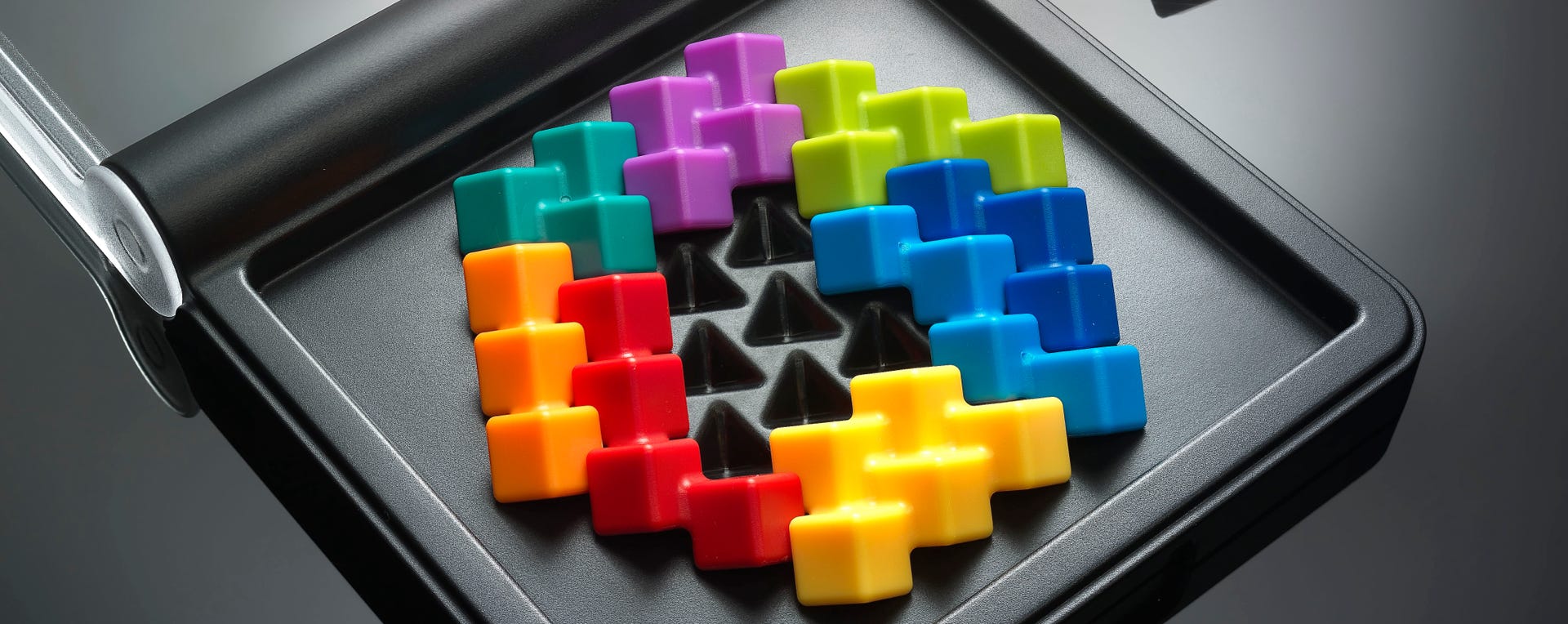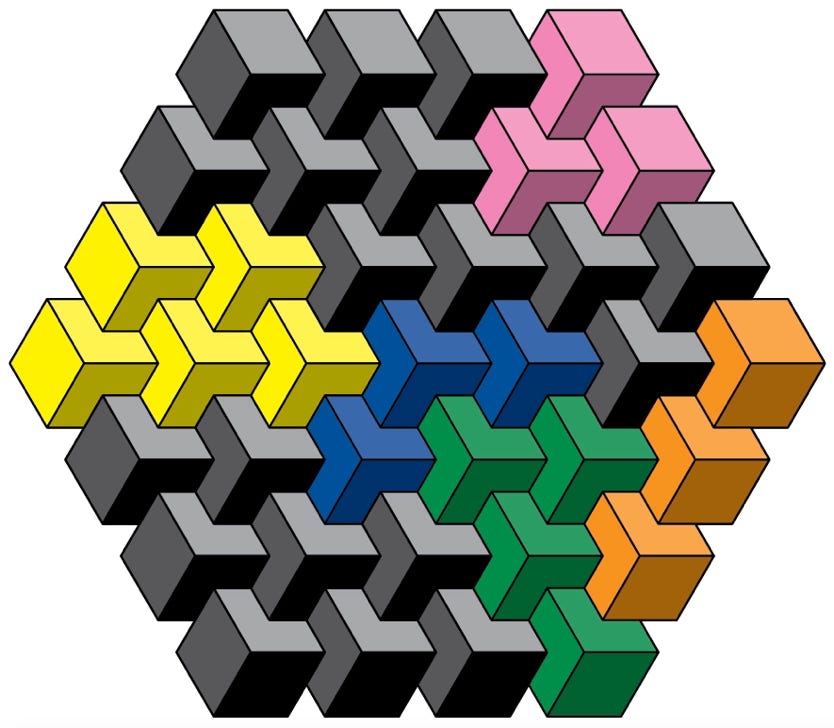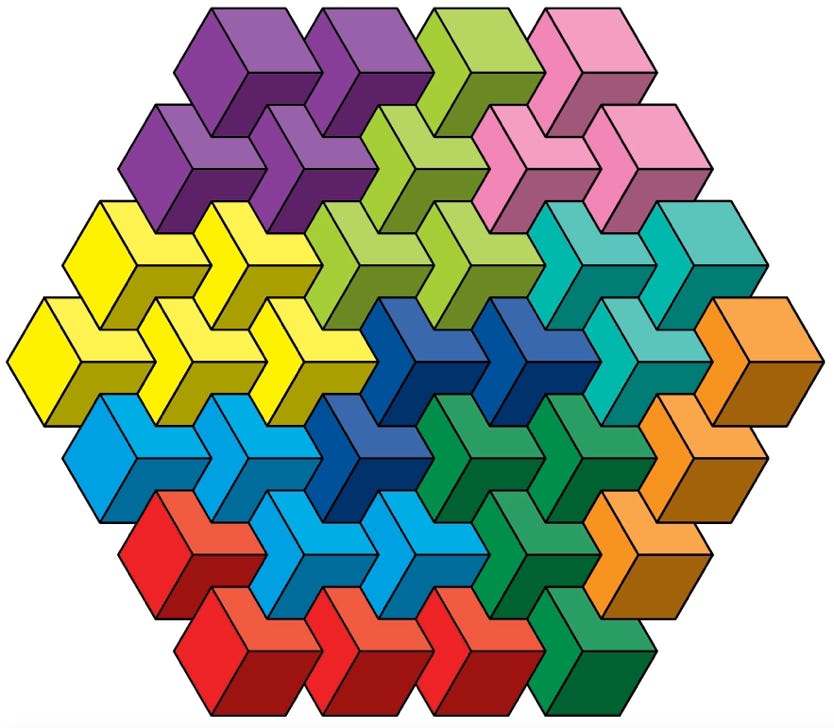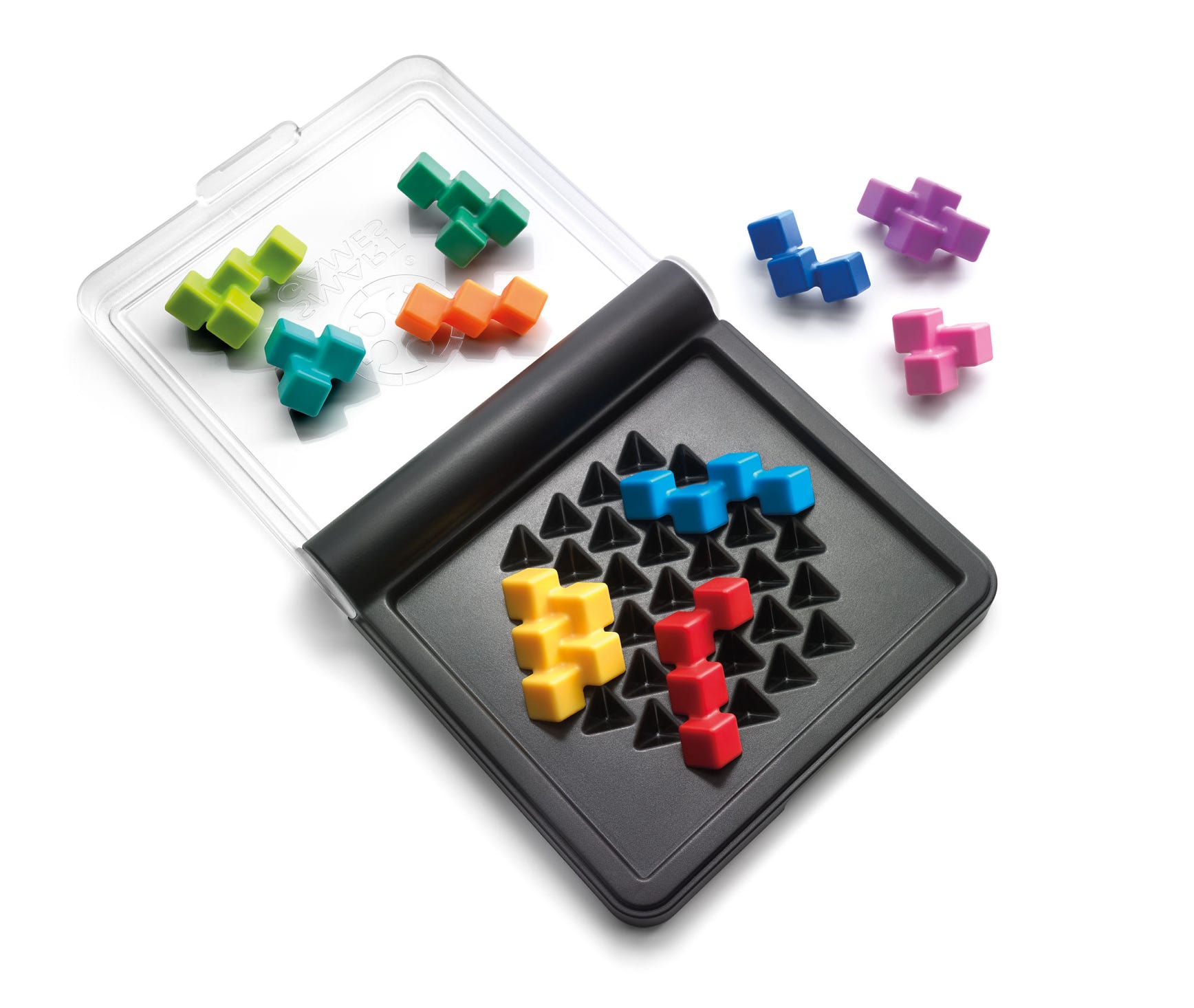
IQ-Perplex
The product development of IQ-Perplex (for SmartGames)
Raf Peeters, January 2023

There exist many packing problems with ball shaped puzzle pieces and probably even more based on cubes. IQ-Perplex is also based on cubes, but they are tilted on one of their corners. So although you would expect an orthogonal grid (as you normally would have with cubes), this results into an hexagonal grid. Theoretically you could also change the cubes to ball shapes. But if you did, you would loose the one thing that makes this puzzle game so perplexing: ball shapes are symmetrical in all directions, but cubes have specific orientations. When you place them like this on a grid, they overlap each other a little bit. And the combination of these properties gives this puzzle it’s surprising behavior.
NOT FOR DUMMIES
In a game with puzzle pieces that are based on identical segments, you would expect that all pieces behave in a similar way. Normally they do, in this game they won’t. Some pieces can be placed in 6 different orientations (3 on each side). Some pieces (that are identical on top or bottom side) only have 3 possible orientations. And some pieces which have also a rotation symmetry, only have 1 possible orientation on the game board!
Puzzle pieces that look identical at first sight are not identical, because the cubes are angled differently. These pieces, like for example the pink and dark green behave similar, but both fit correctly on different places on the grid. Sometimes if a puzzle piece has the right shape (in top view) but the cubes don’t align with the other puzzle pieces on the grid, you can align them, by rotating the piece 180°. But a piece like the purple one needs to be flipped instead of rotated to make it fit. And for other pieces, like the ones that have only 1 possible orientation, it doesn’t matter how many times you rotate it or flip it. If they don’t fit, they simply don’t fit.
This all sounds complicated, but there is no need to memorize the options for each puzzle piece. As long as you realize that some pieces have many options and others don’t, you will be fine. After that, this game is not much more difficult than any other IQ-game I designed the last 15 years. So the only obstacle is the learning curve at the very start. Once you are used to the puzzle pieces and their irregular behavior, the challenges and difficulty of the levels is similar to other games.
Because the game looks and sounds complex, my colleagues were afraid that people would find it too difficult. One of the early designs for the packaging even had the warning “not for dummies”. But in the final version we removed this phrase again and replaced it with a higher age (12+) on the box to give customers an indication that this puzzle might be a bit more challenging than expected. But if you have a child with a lot of patience and perseverance who likes IQ-puzzles, there is no specific reason why it would not be able to solve IQ-Perplex, because apart from the behavior of puzzle pieces this is a straight forward “fill the grid puzzle”.
Although the game has a very nice 3D look, it is more a 2D packing problem with pieces in 1 layer. I tried to make challenges in 3D, but that was unplayable. Theoretically you can stack more layers of puzzle pieces on top of each other, but that soon becomes too complex to visualize, which is needed for challenges and solutions. If you prefer that, you should try ZigZag Puzzler. That is also made of cubes tilted on a corner, but in that game the sides of all cubes are in the same plane. Therefor that game can be stacked as a pyramid, which is by the way a lot harder than this game. IQ-Perplex will become available in Summer 2023.


Example of a challenge and solution of IQ-Perplex.

GAME RULES IQ-PERPLEX
1) Choose a challenge. Place the puzzle pieces on the game board as shown.
2) Fit all remaining puzzle pieces on the game board. Puzzle pieces overlap each other so players are allowed to lift pieces already on the game board to add new ones.
3) You have found the solution when all pieces fit on the game board AND the surfaces of the cubes are aligned with each other (see hints below). There is only one solution, found at the end of the challenge booklet.
HINTS:
Each puzzle piece is made of cubes. When placing the puzzle pieces on the board, the cubes should fit completely inside the triangular cut-outs on the game board so that the sides of the cubes of all pieces are angled the same way.
Before you start playing, experiment with the different puzzle pieces on the game board to get familiar with the possibilities and limitations of each piece. Some pieces can only be orientated in a single way, other pieces have 3 or 6 different orientations!
Note that some of puzzle pieces can be rotated or flipped to place them on the gameboard correctly, while others cannot.
Website ©2024 Raf Peeters
Products and images: © Smart